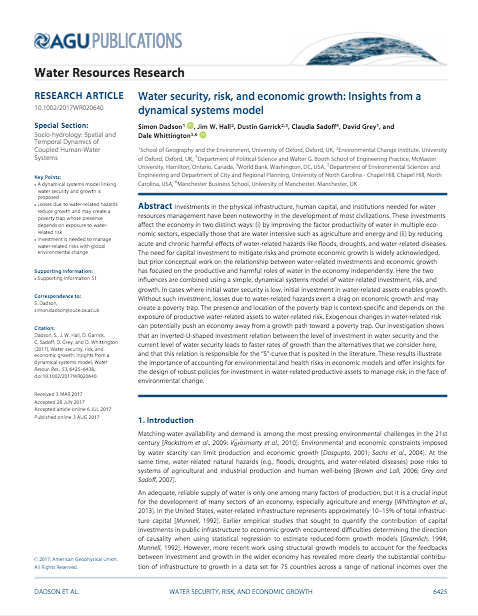Authors: Simon Dadson, Jim W. Hall, Dustin Garrick, Claudia Sadoff, David Grey, Dale Whittington
Investments in the physical infrastructure, human capital, and institutions needed for water resources management have been noteworthy in the development of most civilizations. These investments affect the economy in two distinct ways: (i) by improving the factor productivity of water in multiple economic sectors, especially those that are water intensive such as agriculture and energy and (ii) by reducing acute and chronic harmful effects of water-related hazards like floods, droughts, and water-related diseases. The need for capital investment to mitigate risks and promote economic growth is widely acknowledged, but prior conceptual work on the relationship between water-related investments and economic growth has focused on the productive and harmful roles of water in the economy independently.
Here the two influences are combined using a simple, dynamical systems model of water-related investment, risk, and growth. In cases where initial water security is low, initial investment in water-related assets enables growth. Without such investment, losses due to water-related hazards exert a drag on economic growth and may create a poverty trap. The presence and location of the poverty trap is context-specific and depends on the exposure of productive water-related assets to water-related risk. Exogenous changes in water-related risk can potentially push an economy away from a growth path toward a poverty trap.

